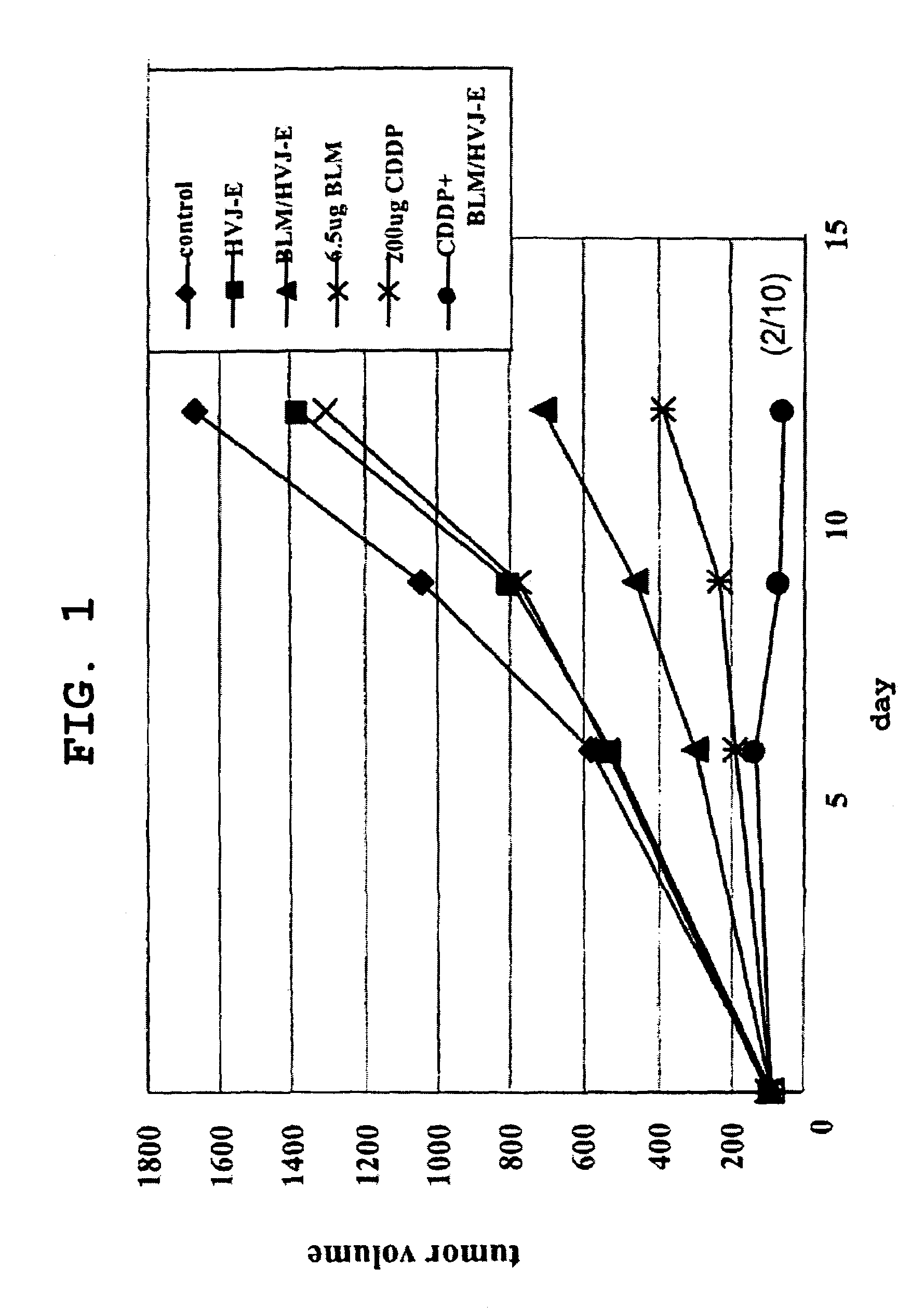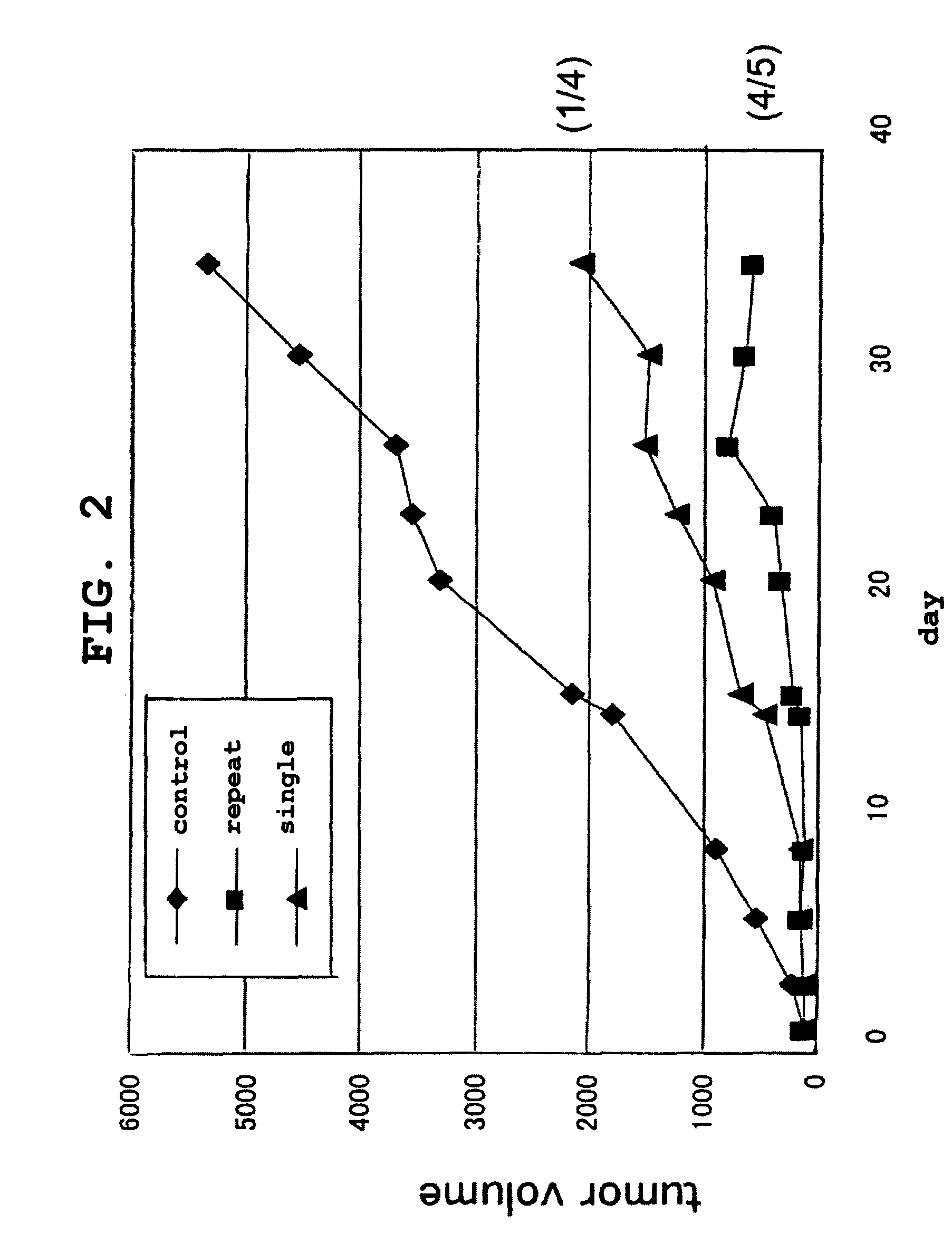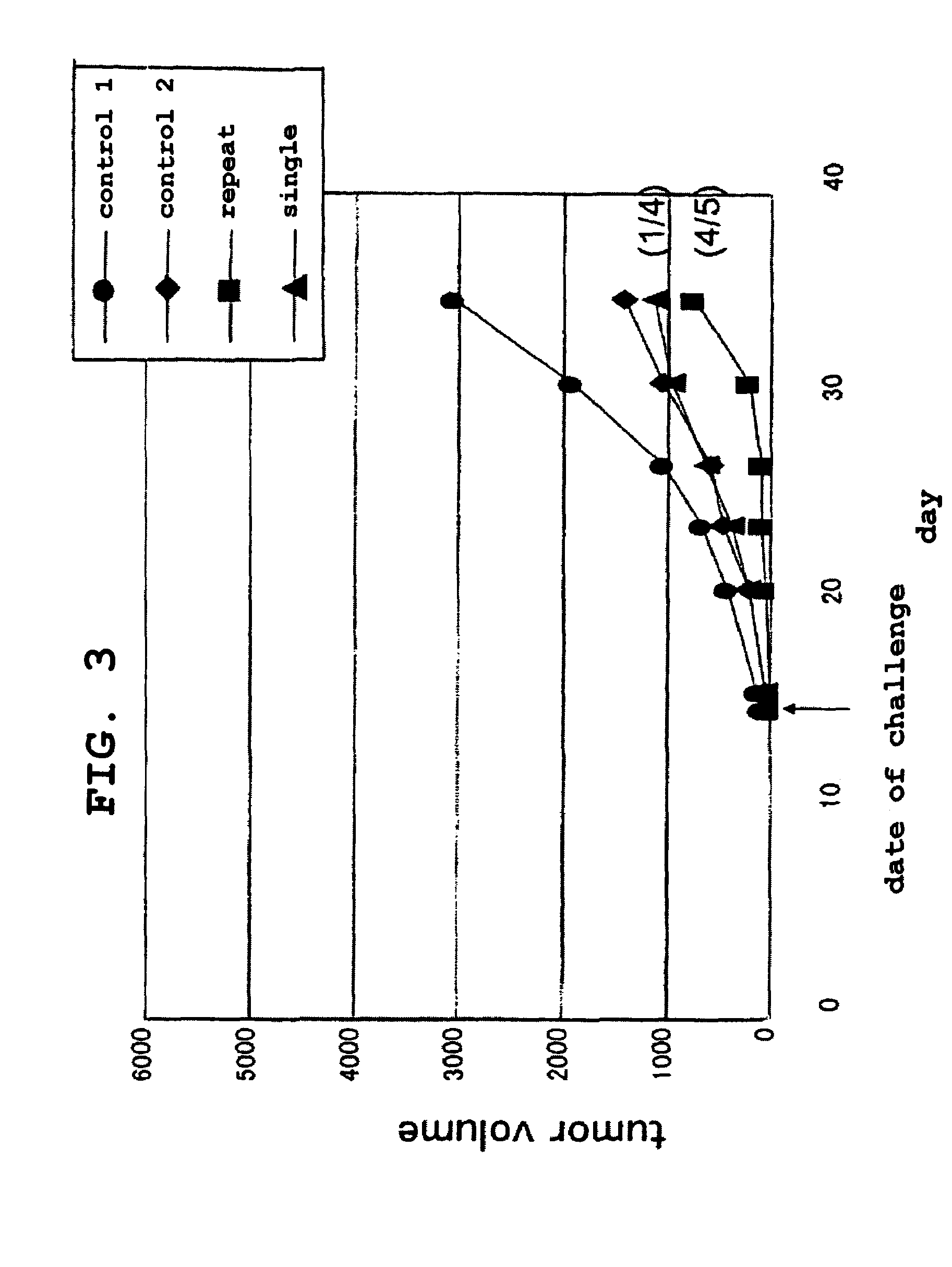Composition having antitumor effect
a technology of antitumor and composition, which is applied in the field of vehicles for inducing antitumor immunity, can solve the problems of cancer cure rate not being increased from the current level of 50% to achieve cancer control, which is a systemic therapy, to healing when used alone, and the relative contribution of chemotherapy to the healing rate is very low, so as to minimize the area to be resected , the effect of elimination of metastatic tumor
- Summary
- Abstract
- Description
- Claims
- Application Information
AI Technical Summary
Benefits of technology
Problems solved by technology
Method used
Image
Examples
example 1
(1) Study Design
[0182]CT-26 cells derived from mouse colon cancer (5×106 cells) were intradermally transplanted to the backs of 8-week-old male BALB / cAnNCrj mice to yield cancer-bearing mice. Five days after the transplantation, 0.2 mg / body Platocin Injection (cisplatin, CDDP) was intraperitoneally administered to animals wherein the tumor diameter (major diameter) had reached about 5 mm. Following this administration, HVJ-E containing or not containing an anticancer drug (bleomycin hydrochloride [BLM]: Nippon Kayaku Co., Ltd.) and the like were administered into the tumor in a single dose (on the day after administration of cisplatin) or in multiple doses (3 times: 1, 5, and 8 days after administration of cisplatin). Tumor diameters, survival curves, and immune reactions in the tumor tissue were evaluated.
[0183]Furthermore, CT-26 cells or isogenic mouse-derived Meth-A cells were transplanted to cancer-bearing mouse receiving the above-described treatment, and the dynamics of the tr...
example 2
(1) Study Design
B49 Cell-Inoculated Mouse Model
[0241]This experimental model can be prepared in accordance with, for example, a method described in Anticancer Res., 2004, 24(4):2225-30, and the like.
[0242]Specifically, 2×106 MB49 cells were intradermally inoculated to the backs of B6 mice, and the animals were allowed to stand for 5 days; a sample for each of the groups G1 to G6 was inoculated three times to the tumors of animals having tumor diameters of 7-8 mm, and their effects were evaluated.[0243]G1; physiological saline (control)[0244]G2; adriamycin (ADM) 20 μg[0245]G3; ADM 100 μg[0246]G4; ADM 20 μg+HVJ-E 5000 HAU[0247]G5; ADM 100 μg+HVJ-E 5000 HAU[0248]G6; HVJ-E 5000 HAU
(2) Results
[0249]Changes over time in tumor volume (mm3) for individual groups are shown below. (see FIG. 11)
[0250]
GroupG1G2G3G4G5G6Day0120128.4119125.3117.6120.55351.1303.2285.8266.6199.1423.67442.5330291.2190.6152.6734.19717.6324.9333.9267.5151.6904.8121188.79331.74426.88333.01217.841510.1152040.38443.36450....
example 3
Adriamycin (ADM) Sensitivity of MB49 (Transitional Epithelial Cancer) Cells
(Method)
[0255]The survival rate of MB49 cells, which depends on adriamycin (ADM) concentration, was examined by the method described below using WST-8 assay (cell counting kit-8; Dojindo Laboratories).
[0256]Adriamycin (trade name; Adriacin Injection, Kyowa Hakko Kogyo Co., Ltd.) was added to 10,000 MB49 cells, and the cells were prepared as 200 μl of sample solution and sown to a 96-well plate.
[0257]After 48 hours of cultivation, the supernatant was removed by WST-8 assay, 100 μl of a cell counting kit solution, previously diluted 10 fold with RPMI medium, was added, and the plate was allowed to stand at 37° C. for 1.5 hours. Absorbance at 450 nm was determined using a microplate reader. Assuming the absorbance of a sample of MB49 cells only to be 100% survival rate, the survival rates at various concentrations were calculated. Concentrations that produced survival rates of 50% and 90% were calculated and des...
PUM
| Property | Measurement | Unit |
|---|---|---|
| pH | aaaaa | aaaaa |
| time | aaaaa | aaaaa |
| diameter | aaaaa | aaaaa |
Abstract
Description
Claims
Application Information
 Login to View More
Login to View More - R&D
- Intellectual Property
- Life Sciences
- Materials
- Tech Scout
- Unparalleled Data Quality
- Higher Quality Content
- 60% Fewer Hallucinations
Browse by: Latest US Patents, China's latest patents, Technical Efficacy Thesaurus, Application Domain, Technology Topic, Popular Technical Reports.
© 2025 PatSnap. All rights reserved.Legal|Privacy policy|Modern Slavery Act Transparency Statement|Sitemap|About US| Contact US: help@patsnap.com



